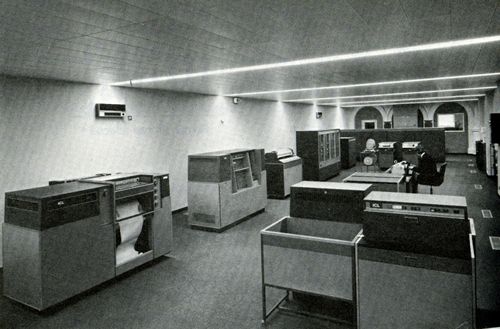My first book
My first book (which has surely sunk completely without trace by now) was launched upon the world in the summer of 1975 at a Press Conference (no, really!) at ICL's Putney HQ. It wasn't really a book, more of an audio/visual self-teaching package — the 1900 Series PLAN Independent Study Course ("PISC" for short). In its 28 modules1 I encapsulated what had been a three-week classroom course covering the basics of low-level coding of what one of my later colleagues2 memorably dismissed as a "6-bit calculating engine":

This ICL 1904 was the very one3 I programmed when I joined ICL at the Beaumont (Old Windsor) Education and Training HQ in February 1974. The photo appeared in a book called "Computers in Context" by RA Cuninghame-Green that my parents gave me for my 22nd birthday in October 1973 once they realised I was completely serious about jacking in my (unfinished) five-year aeronautical engineering apprenticeship with Hawker Siddeley in Hatfield to move into this weird (and then relatively new) world of computers.
In October 2012 I heard a brief chat with Philip Pullman, whose personal "writing secret" is to produce three pages per day. I once managed 16 in one day on this book's audio script in the mid-70s, but I suspect I would shudder to be shown it (or, worse, forced to listen4 to it) now as I have no doubt it was pretty deathless stuff. Unless you get excited by low-level programming techniques required by specific machine architectures. Although I did — to a degree — my interests have changed over the years.
My invitation to the launch of my book came very much at the last minute, of course. And there were only 50 copies, priced at £750 each (with a rather crappy portable cassette tape player thrown in). Mind you, in order to get a decent deal on these players we'd actually become an official Hitachi dealer, which was how I shortly afterwards got hold, at trade price, of a decent cassette tape deck to which I added my first external Dolby B noise reduction unit — in what, it now becomes obvious in retrospect, was to be a pretty well life-long quest for better signal-to-noise ratios. A quest that Christa tolerated remarkably well over many years.